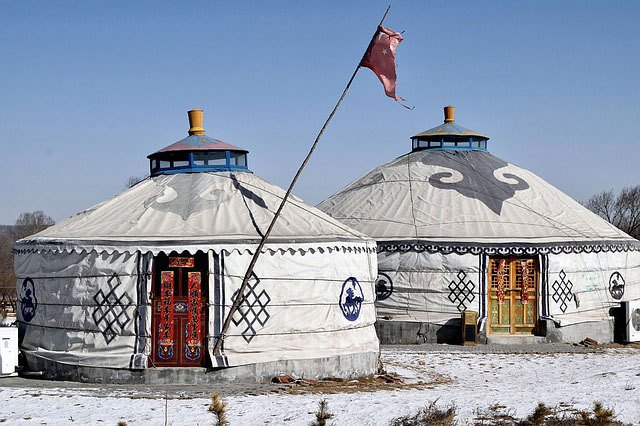Mongolia is a central and eastern Asian country that’s nestled in between China and Russia. When we say “nestled” we don’t mean the country is small. In fact, if possible, the Netherlands would fit in Mongolia a whopping 37 times! With its capital Ulaanbaatar, Mongolia is slowly developing although it’s mainly known for its nomadic culture and vast expanses of land. The country went through a phase where foreign investors were deeply interested in putting money in Mongolia and the famous Rio Tinto is considering investing in a $5.3 billion mining project there. This is about one-third of the country’s total economy! With such large investments on the horizon it’s crucial that there will be a need for translation to Mongolian in official documents. Whether bank loans, real estate purchases, business decisions, it will be crucial to translate English to Mongolian. But what is the main alphabet of Mongolia? If we’re talking about translation of English to Mongolian or Mongolian to English, it will be important to step back and look at the evolution of the country’s writing system to know what changes are to be expected and what opportunities lie ahead. Let’s take a closer look.
The classical Mongolian script
It was around 1204 when Genghis Khan captured a Uyghur scribe, who was responsible for adapting the Uyghur alphabet and writing it in Mongol. His name was Tata-tonga and his work is, with some minor modifications, still used in Inner Mongolia today. One of this alphabet’s main features is that it’s written vertically from left to right and from top to bottom. Interestingly, this is the world’s only alphabet which is written from left to right as all other vertical alphabets are written from right to left. Although this is known as the traditional Mongolian script, there also exists a vertical square script which appears on the country’s banknotes.
Galik alphabet
Fast-forward a few centuries later to 1587, the translator and scholar Ayuush Güüsh created the Galik alphabet. He was inspired by the third Dalai Lama and the main purpose of this alphabet was to mainly add some extra letters to enable scholars and the like to transcribe Tibetan and Sanskrit in religious texts. Later and due to the country’s proximity to China and Russia, it was adapted to also cater for transcribing Chinese and Russian. Some time later, some of these letters officially merged with the traditional alphabet and were known as the “Galig usug”. It was used to transcribe foreign words.
Todo alphabet
Think that’s where the story ends? Think again! The Mongolian script evolved even further in 1648 when the Oirat Buddhist monk Zaya Pandita created a new variation aiming to bring the written language closer to the actual Oirat pronunciation in addition to making it easier to transcribe Tibetan and Sanskrit. In Xinjiang, which is in China, the Oirats still use this variation to this day.
Phags-pa script
Around 1269, Kublai Khan commissioned the Tibetan monk Drogön Chögyal Phagpa to “design a new script for use by the whole empire”. This was during the Yuan Dynasty. “The purpose of this was to fit the Mongolian language and to extend it to fit with a language with a significantly different phonology such as Chinese.” As a result, Phagpa extended the Tibetan script to encompass Mongolian and Chinese giving birth to the Phags-pa script of today. When the Yuan Dynasty collapsed around 1386, this script fell into disuse. However, it was still used as a “phonetic gloss” for Mongolians who were learning Chinese characters.
Soyombo and the horizontal square script
In the late 17th century, this script type was created by the Mongolian monk and scholar Bogdo Zanabazar. It can be used to write Tibetan and Sanskrit. “A special glyph in the script, the Soyombo symbol, became a national symbol of Mongolia, and has appeared on the national flag since 1921, and on the national coat of arms since 1992, as well as money, stamps, etc.”
Zanabazar also developed the horizontal square script, which was primarily based on the Tibetan alphabet, read left to right, and employed “vowel diacritics” above and below consonants. The horizontal square script is included in the Unicode Standard under the name “Zanabazar Square.” It consists of 72 characters.
The Latin alphabet
It was on 1 February 1930 when Mongolia officially adopted the Latin alphabet. This was a short-lived endeavour as this decision was reversed just 11 years later on 25 March 1941. The reasons for this are varied. Some sources say that the alphabet did not cater to all the distinct sounds of the Mongolian language, while others suggest political reasons as Mongolia fell under Soviet rule shortly thereafter.
Cyrillic
 Owing to the country’s history and ties with the former Soviet block, the most recent Mongolian alphabet is based on the Cyrillic script. Specifically, it is based on the Russian alphabet in addition to two new letters (Өө Öö and Үү Üü). The alphabet was introduced in the 1940s and has been the country’s official writing system to date.
Owing to the country’s history and ties with the former Soviet block, the most recent Mongolian alphabet is based on the Cyrillic script. Specifically, it is based on the Russian alphabet in addition to two new letters (Өө Öö and Үү Üü). The alphabet was introduced in the 1940s and has been the country’s official writing system to date.
The way forward
In March 2020, the Mongolian government announced that it intends to use both the Cyrillic alphabet as well as the traditional Mongolian script which is used in Inner Mongolia for official documentation. The deadline for this transition is 2025.
So, what does this mean for the translation industry and those who are involved in translating Mongolian to English? It means that new doors and new opportunities are knocking at the door for those who are bilingual in both Mongolian and English. Translators with knowledge of both Mongolian script and Cyrillic as well as English will have their work cut out for them as the government intends to use these scripts in official documentation. The demand for Mongolian translations is expected to soar due to incoming potential future investments in the country. With such demand, there will be significant need for localization and translation services to and from Mongolian and the industry needs to begin preparing for this change sooner rather than later in order to benefit from the business opportunities offered by this announcement.
